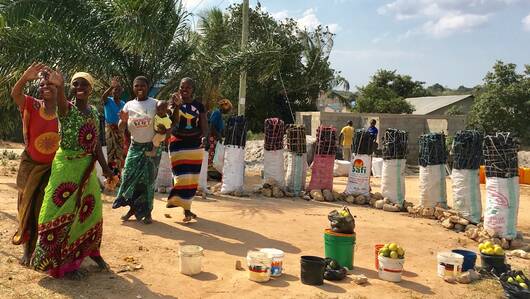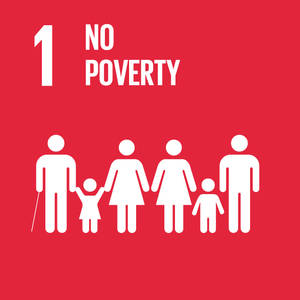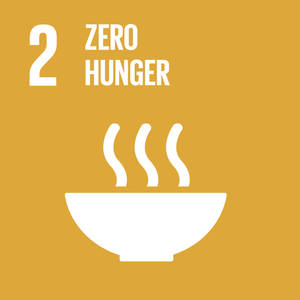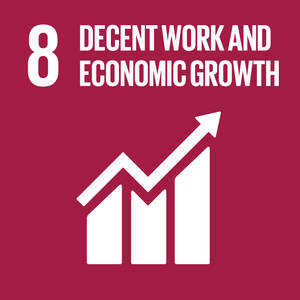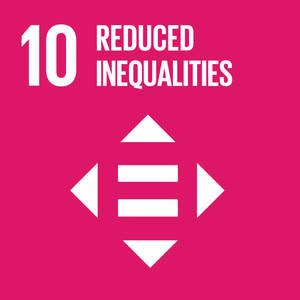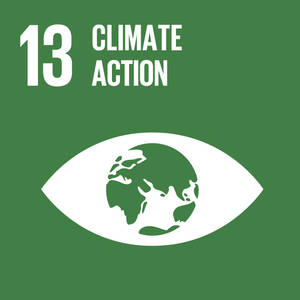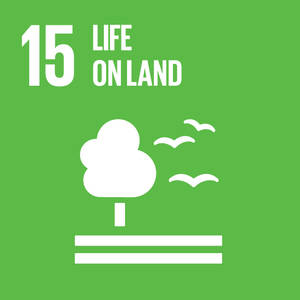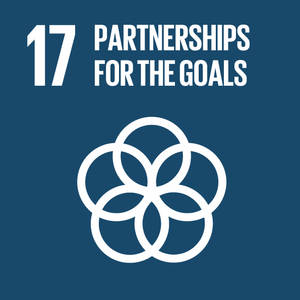The impacts of social protection for forest-dependent people
Evidence across regions shows the clear positive impacts of social protection on rural populations including FDP and FDC in terms of food security, nutrition, human capital development, resilience building, economic inclusion, decent work, sustainable natural resource management, and climate change adaptation and mitigation.
Social protection has proved to enhance prevention and protection against life-cycle risks that might affect rural populations, including FDP, through a range of effective contributory and non-contributory mechanisms. Social protection provides benefits for women and children; support for people of working age and their families in the event of maternity, sickness, disability, occupational injury or unemployment; and pensions for older persons. Social protection is an important aspect of facilitating the transition from the informal to the formal economy, thereby granting access to more productive and decent employment. In particular, social insurance and labour market interventions can compensate for job loss due to employment injury or environmental reasons through unemployment or other benefits, and foster transitions to new economic opportunities. Likewise, health protection, unemployment insurance or pensions can be extended to current or former forest workers across various forest value chains.
There is also evidence that social protection measures have a positive impact on the fight against hunger, malnutrition and micronutrient deficiencies in rural areas. Indeed, social protection recipients tend to increase the number of their daily meals, diversify their diets, and reduce negative coping mechanisms that affect nutrition and health in times of crisis, such as reducing children’s food intake or removing them from school to support family income-generating activities. In particular, school feeding programmes have been shown to encourage parents in FDC to keep their children in school and provide them with the essential nutrients to stay healthy and learn.
Social protection can improve the economic resilience and financial independence of FDP through a combination of contributory and non-contributory interventions by providing them with greater income security and access to health care. This could also include sustainable agriculture interventions (e.g. agroforestry, forest restoration, soil and water conservation) and/or technical and financial literacy training, as well as the promotion of financial inclusion among FDP. For example, cash plus approaches, which offer cash transfers together with tree seedlings and/or training in forest conservation and management, have been shown to achieve sustainable forestry goals while providing income opportunities. Other benefits also improve resilience to shocks by protecting beneficiaries from loss of income or catastrophic spending resulting from various life cycle shocks.
Furthermore, social protection has also demonstrated to enhance the prevention and protection against covariate risks (e.g. natural disasters, and economic and political crisis) to their livelihoods and well-being. Evidence shows that social protection, when shock-responsive, contributes to disaster risk reduction and management, as well as to climate change adaptation and mitigation initiatives and other covariate shocks. Specifically, it has been shown worldwide that the provision of cash transfers to FDP can lead to an increase in incomes and in the value of physical assets acquired in the market in normal times or in anticipation of, during, and after covariate shocks (FAO, 2023). In some cases, cash has served as insurance and a substitute for consumption, and goods purchased on the market replace those from deforestation (FAO, 2023).
Furthermore, as explained below, there is growing evidence of the positive effects of synergies and coherence between the social protection and forestry sectors to achieve poverty reduction, environmental sustainability, climate change adaptation and mitigation outcomes. For example, some public works programmes implemented in several countries fulfil both social protection and forest conservation objectives because they provide cash or food in exchange for work on sustainable natural resource management projects, leading to an increase in plated forests and vegetation cover (e.g. afforestation and reforestation). They also increase the conservation skills and knowledge of participants. Lastly, social protection can protect populations at increased risk of climate-related shocks, and support workers who are negatively impacted by green policies. Therefore, it is essential to implement just transition processes aimed to optimize the social and economic opportunities of climate action by minimizing and compensating for any challenges.
Access barriers faced by forest-dependent people
Access barriers faced by forest-dependent people
FDP are heterogeneous groups with mixed livelihoods. Similar to rural populations, including agricultural workers, FDP generally face barriers in accessing social protection systems (FAO, forthcoming a; forthcoming b), as follows:
- Institutional and administrative barriers: Some governments have low administrative capacities and burdensome procedures. These constraints are even more severe in the forestry sector due to a low level of registration, pervasive informality, mixed livelihoods and labour mobility (from paid employment to self-employment). The latter may hinder workers from obtaining benefits even if they have previously contributed.
- Geographical remoteness: FDP and FDC are usually located in areas remote from markets and public services, thus imposing higher administrative and delivery costs for social protection providers. Remoteness and isolation from markets also prevent the delivery of instruments such as cash transfers, which require developed markets and strong institutions.
- Legal barriers: In some countries, agricultural workers, including FDP and FDC, may be excluded from labour legislation or be under separate legislation, which often provides a lower level of protection. In addition, FDP and FDC often lack formal identification documents, such as birth certificates or land titles, which are required to access social protection programmes. This absence of proper documentation poses a significant barrier to their inclusion in these programmes.
- Financial barriers: FDP and FDC often have very low and irregular incomes, which restricts their ability to contribute to social insurance schemes. The contribution payments may also be aggravated by the seasonality of their livelihoods and subject to covariate shocks, e.g. related to the effects of climate change.
- Social exclusion: FDP and FDC typically comprise ethnic minorities or indigenous communities that are marginalized from social protection programmes. Hence, they are often politically and culturally excluded, hindered by language and access barriers – from social protection programmes and service delivery. Moreover, social protection programmes may not adequately account for the specific vulnerabilities of FDP and FDC. The targeting mechanisms may not effectively identify and prioritize these marginalized groups, leading to exclusion and limited access to benefits.
- Political awareness: The particular contexts of FDP and FDC are not fully understood, nor are they generally recognized explicitly as a vulnerable group. Consequently, FDP and FDC are not particularly targeted by social protection programmes, nor do social protection programmes specifically address their vulnerabilities.
The above are some of the specific challenges of FDP and FDC and the barriers they face in accessing social protection. Policy options for removing these barriers and extending adequate social protection to them will be examined in the next section.
Expanding adequate and comprehensive social protection systems to cover FDP
Expanding adequate and comprehensive social protection systems to cover FDP
As a result of the COVID-19 pandemic that affected the livelihoods of countless millions of people, several countries made significant progress and reaffirmed their commitment to extend adequate social protection coverage for all. Nevertheless, according to recent estimates, 53.1 percent (4.1 billion people) are still not covered by at least one social protection benefit. Among the various challenges to achieving universal coverage of social protection are extending coverage to uncovered workers, including those in the informal and rural economy.
Countries are called upon to expand coverage of nationally appropriate social protection systems to achieve substantial coverage of the poor and the vulnerable, including FDP by 2030 (SDG 1.3) while addressing the consequences of environmental degradation and climate change (SDGs 13 and 15). The extension of social protection to all, including FDP and FDC, should be rights-based and aligned with relevant international standards on the matter, including the Convention 102, the Recommendation 202, the Convention 12 and the Recommendation 17. As further outlined in the following section, policies to ensure social protection coverage for rural people, including FDP and FDC and policymakers, can use two mutually complementary approaches, which are the extension of social insurance and the extension of non-contributory benefits.
Although people living in and around forests are exposed to multiple risks and vulnerabilities, and therefore have a significant need for social protection, social protection coverage is extremely poor in the forestry sector. The prevalence of informal employment in forest areas can leave FDP without adequate social protection provisions, such as contributory benefits. Furthermore, due to numerous access barriers such as political awareness, social exclusion, geographical remoteness and legal, financial, institutional and administrative barriers, FDP face various difficulties in accessing social protection. Moreover, it is difficult to determine the legal and actual coverage because specific data are scant, thus increasing the difficulty of obtaining useful estimates of existing social protection and where to fill the gaps.
Several aspects need to be taken into account when designing and extending contributory and/or non-contributory social protection systems to agricultural workers, including FDP and FDC; mechanisms should be adapted to their specificities, for example by including them in legal frameworks. This implies an inclusive design process, with the participation of agricultural workers and FDP, including ethnic minorities, indigenous and tribal people and other marginalized groups such as women, youth and other rural stakeholders such as forest producer organizations and cooperatives (FAO, forthcoming a and b).
According to FAO and the International Labour Organization (ILO) to ensure adequate social protection coverage for agricultural workers including FDP, policymakers can build on existing public social protection programmes, and/or design new programmes (both contributory and non-contributory) while avoiding fragmentation and ensuring that risk pools are as large as possible. Indeed, many countries combine the two approaches to guarantee at least a basic level of social protection to all, progressively providing higher levels of protection to as many people as possible. Given the heterogeneity of FDP as well as their mixed livelihoods, there is no ‘universal recipe’ within and between countries to adequately extend their social protection coverage.
Extending social protection coverage to all, including FDP, requires Member States to assess their needs in order to evaluate coverage gaps and barriers to access it, which can inform the selection of options to extend contributory and/or non-contributory benefits. The identification of FDP, including minorities, Indigenous and Tribal Peoples, forestry organizations, etc. within the target areas (village, locality, district, county, etc.) through context-specific needs assessments could support the expansion of social protection coverage. Similarly, this could also be achieved by developing comprehensive and coherent policies and legal frameworks that include FDP. Often, FDP are not identified as being among the most vulnerable populations, but remain marginalized and excluded from legislation and universal social protection schemes due to their remoteness, specific culture and customs. The entire process must include inclusive consultations, easily accessible to FDP and vulnerable and marginalized subgroups (youth, women, indigenous and tribal peoples, etc.) in order to obtain input from all stakeholders, including social dialogue, particularly at the local level.
Policy and programme coherence between forestry and social protection
Policy and programme coherence between forestry and social protection
Policy coherence is defined as the “systematic promotion of complementary and consistent policies and programmes across sectors, thereby creating synergies to combat poverty more effectively”. Enhancing policy coherence for sustainable development is found in Target 17.14 of the Sustainable Development Goals and is also reflected in the FAO Strategic Framework through the interconnected economic, social and environmental dimensions of agrifood systems.
The extension of social protection should not be carried out in an isolated manner, but should be coordinated with other broader and sectoral policies (e.g. formalization, employment policies or agricultural development policies) to ensure coherence and create synergies. Coherent interventions between social protection and forestry seek to maximize economic and social benefits for FDP while ensuring the environmental sustainability of the sector. Fostering policy coherence entails reconciling the social, economic and environmental pillars of sustainable development towards sustainable, inclusive and resilient agrifood systems.
Social protection when combined with forestry and natural resources management can generate a broad range of positive impacts: boosting economic growth; enhancing the productivity of rural households while supporting them to diversify sources of income; achieving food and nutrition security; improving sustainable natural resources management; and building resilience. Social protection programmes working in alignment with forest management policies can create the conditions for forestry asset building to reduce reliance on unsustainable use and management of forest resources, as well as to improve financial and market access. Similarly, coherent interventions contribute to enhancing the role of forests as safety nets without jeopardizing their conservation and sustainable management. Hence, policy coherence across forestry, social protection, climate change adaptation and mitigation, and biodiversity conservation can act as the critical lever to enable change at the scale required to achieve the SDGs and ensure more efficient, inclusive, resilient and sustainable agrifood systems. Lastly, policy coherence is essential to just transition processes aimed to optimize the social and economic opportunities of climate action by minimizing and compensating for any challenges.
The promotion of coherence between forestry and social protection must be planned and implemented in collaboration with the forestry sector stakeholders, because it has specificities that must be taken into account. According to the dedicated approach developed by FAO (2022), this can be carried out by addressing the enabling environment, the administrative level, and the design and operations of programmes.
FAO identifies four enabling environmental factors for building and strengthening coherence between social protection and forestry policies: (i) the political will to lead efforts to build coherence; (ii) existing legal and policy frameworks that incorporate coherence, (iii) institutional and human capacities; and (iv) financial resources to promote this. A number of local, regional and international initiatives can be leveraged for fostering coherence, including, for example, climate change funds, Reducing emissions from deforestation and forest degradation in developing countries, and the conservation and enhancement of forest carbon stocks (REDD+) and participatory approaches to forestry. Cross-sectoral policy frameworks are needed to provide the overall vision and guidance necessary to translate political commitments to coherence into action. Strong institutional capacities and coordination (both horizontal and vertical) facilitate the alignment and harmonization of social protection and forestry policies. The means of leveraging the necessary finance include cross-sectoral investment plans, global financing schemes, pooling of funds and investment of local taxes.
At the administrative level, coherence is achieved through clearly defined eligibility criteria, single or unified registries, exchange of information, the appropriate choice of instruments, and a shared or harmonized monitoring and evaluation (M&E) framework tailored to FDP, based on a clear theory of change and a broad set of environmental, social, economic and poverty indicators. Digital technologies, such as farmer registry, including forestry ones, are becoming increasingly used to identify agricultural workers and support the development and implementation of tailored and differentiated policies for FDP and FDC as well as rural populations (FAO, 2023).
Similarly, at the programme and operational levels, FAO identifies coherent social protection and forest interventions that can be developed by countries in three ways: (i) by designing and/or adapting freestanding social protection or forestry programmes with embedded common goals of both poverty reduction and sustainable forestry management. For example, some public works programmes might fulfil both social protection and forest conservation objectives because they provide cash or food in exchange for work on reforestation and afforestation projects. Cash transfers and payment for environmental services can be used to meet social protection and forest conservation objectives through a conditionality such as forest conservation or restoration; (ii) by integrating multiple forestry and social protection programmes into one joint programme that can be implemented in forested areas. REDD+ initiatives present opportunities for the creation of joint programmes, because they may overlap with social protection interventions targeting people living near forests. Other examples of joint programmes are cash plus programmes, which are increasingly being implemented in various developing contexts to enhance livelihoods and contribute to behavioural change. It is therefore possible to envisage a cash plus intervention that would jointly offer cash transfers with tree seedlings or training in forest conservation and management. Such an intervention would contribute to achieving forestry aims while providing income-generating opportunities; and (iii) by aligning separate forestry and social protection programmes in the target FDP. For example, cash transfers or public work schemes in alignment with forestry policies can be used as an incentive to FDP to restore forest landscapes or to compensate and secure income due to forestry policies (e.g. logging bans and/or protected areas). Similarly, forestry policies and programmes in line with social protection schemes can encourage the development of forest value chains in rural areas or provide diversified job opportunities for FDP.
The role of civil society organizations in social protection
The role of civil society organizations in social protection
While the responsibility of expanding adequate and comprehensive coverage of social protection lies primarily with the state, collective actions carried out by civil society organizations (CSOs), including by representatives of rural and agricultural workers and the private sector such as forest producer organizations and cooperatives, play an essential role in social protection.
CSOs and the forest producers’ organizations and cooperatives are well positioned to support the design, implementation and monitoring of formal social protection programmes, given their reach among FDP. This is possible by shaping the design and facilitating the implementation of social protection programmes provided by the State, for example, by: advocating with communities or members of CSOs to participate in and contribute to social insurance funds; informing potential beneficiaries of their entitlements; and providing support in targeting and enforcing activities at the community-level. They can also supply information and feedback to the government to ensure the provision of social protection services to the most needy. Indeed, they empower forest communities to claim their rights and shape social protection services so that these respond to their priorities. Moreover, forest civil society organizations and the private sector have supported the implementation of large-scale social protection programmes in developing countries such as Kenya and Malawi. Thus, stakeholders scaling up public social protection programmes can leverage their grassroots expertise and experiences because they are very well equipped to support the design, implementation and monitoring of formal social protection programmes, given their reach among FDP.

